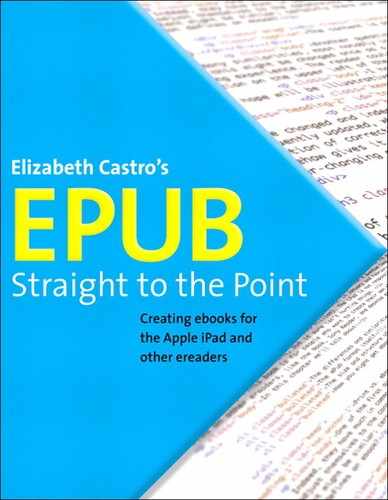Table of Contents
Formats, durability, and batteries
Highlighting and sharing passages
Declaring the file to be XHTML, not HTML
Moving style data to its own file
Adding quotation marks around attributes
Adding closing slashes to empty elements
Finishing cleaning up XHTML code
Using the text editor’s syntax checker
2. Using InDesign to create EPUB
Applying headers, quotes, and other special styles
Replacing local formatting with styles
Creating text wrap within the flow
Preparing your book in order to create the navigational TOC
Creating a Table of Contents Style
Exporting EPUB from InDesign CS4
Exporting EPUB from InDesign CS5
The files that make up an EPUB
The toc.ncx file for the navigational TOC
Organizing files before rezipping
Getting the new EPUB file to the iPad
Further editing, rezipping, and testing
Converting EPUB to Kindle’s Mobi
Ensuring ereaders use your CSS
Cleaning up InDesign EPUB files
Fonts available for ebooks on the iPad
Ornaments, dingbats, and symbols
Controlling a header’s position
Keeping captions with their images
Setting widows and orphans properties
Having CSS mark the first letter and line
